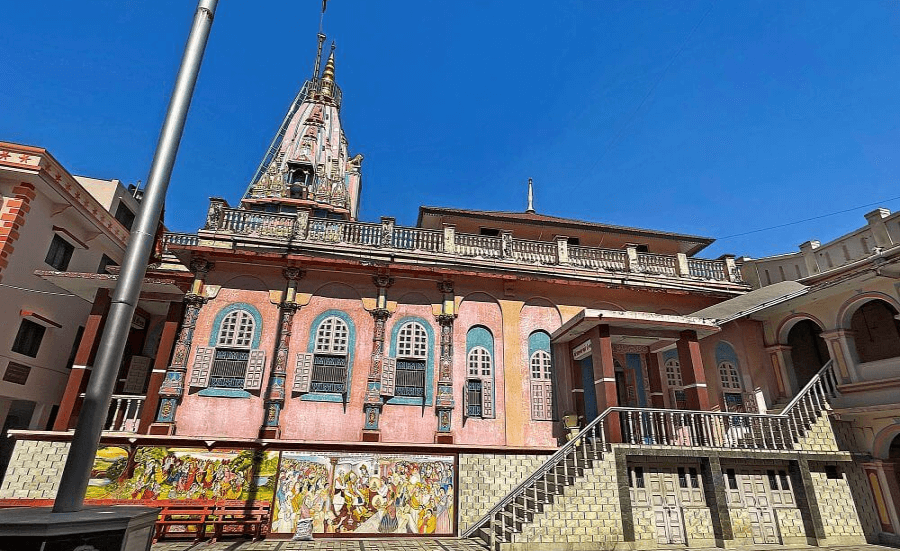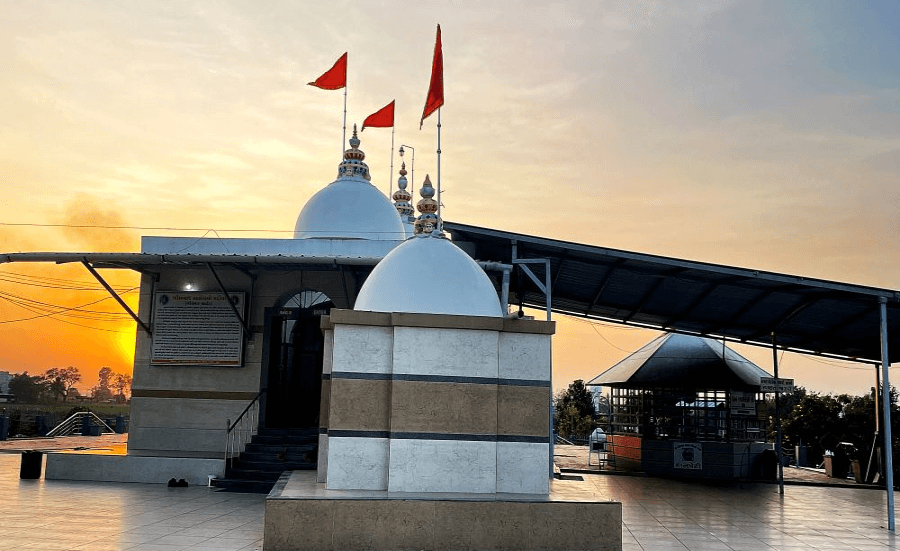
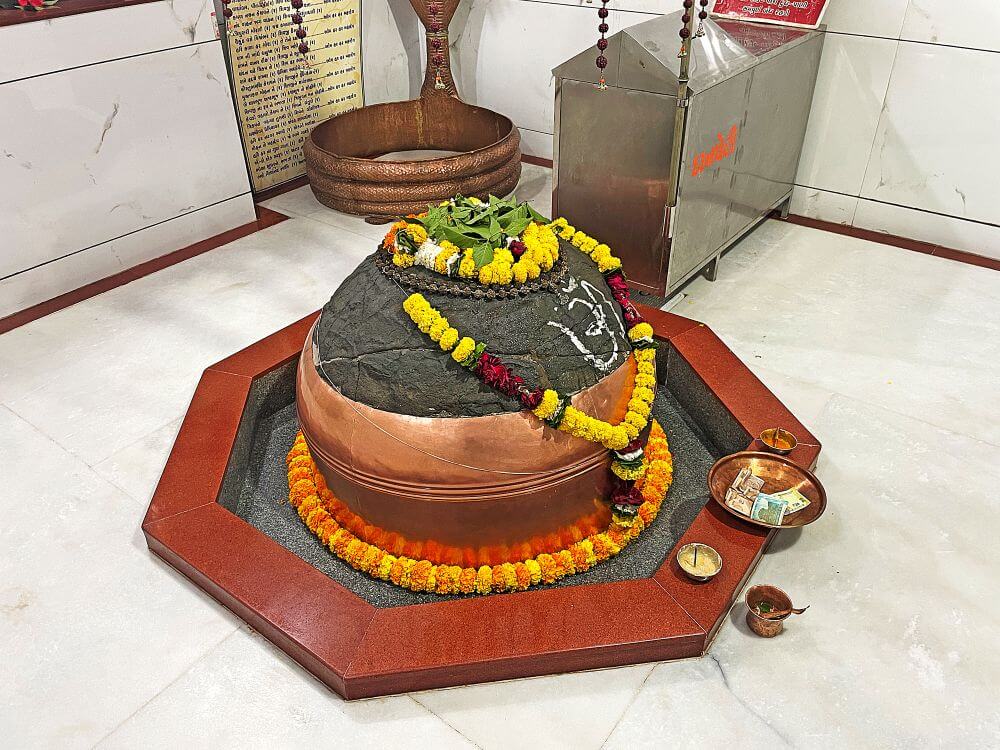 The Bhimanath Mahadev Temple is one of Gujarat’s ancient Shiva temples, believed to date back to the time of the Pandavas. According to legend, a fierce battle took place here between Vayu’s son Bhima and Lord Shiva. Pleased with Bhima’s religious and altruistic nature, Shiva decided to reside at this site in the form of a self-manifested (Swayambhu) Shivlinga. The Shivlinga at this temple is so massive that it cannot be encircled by a single person’s arms. The temple is located on the banks of the Tapi River, and devotees believe that bathing in the river and offering prayers at the temple on Bhima Ekadashi (the eleventh day of the waxing moon in the month of Jyeshtha) grants childless couples the blessing of progeny.
The Bhimanath Mahadev Temple is one of Gujarat’s ancient Shiva temples, believed to date back to the time of the Pandavas. According to legend, a fierce battle took place here between Vayu’s son Bhima and Lord Shiva. Pleased with Bhima’s religious and altruistic nature, Shiva decided to reside at this site in the form of a self-manifested (Swayambhu) Shivlinga. The Shivlinga at this temple is so massive that it cannot be encircled by a single person’s arms. The temple is located on the banks of the Tapi River, and devotees believe that bathing in the river and offering prayers at the temple on Bhima Ekadashi (the eleventh day of the waxing moon in the month of Jyeshtha) grants childless couples the blessing of progeny.
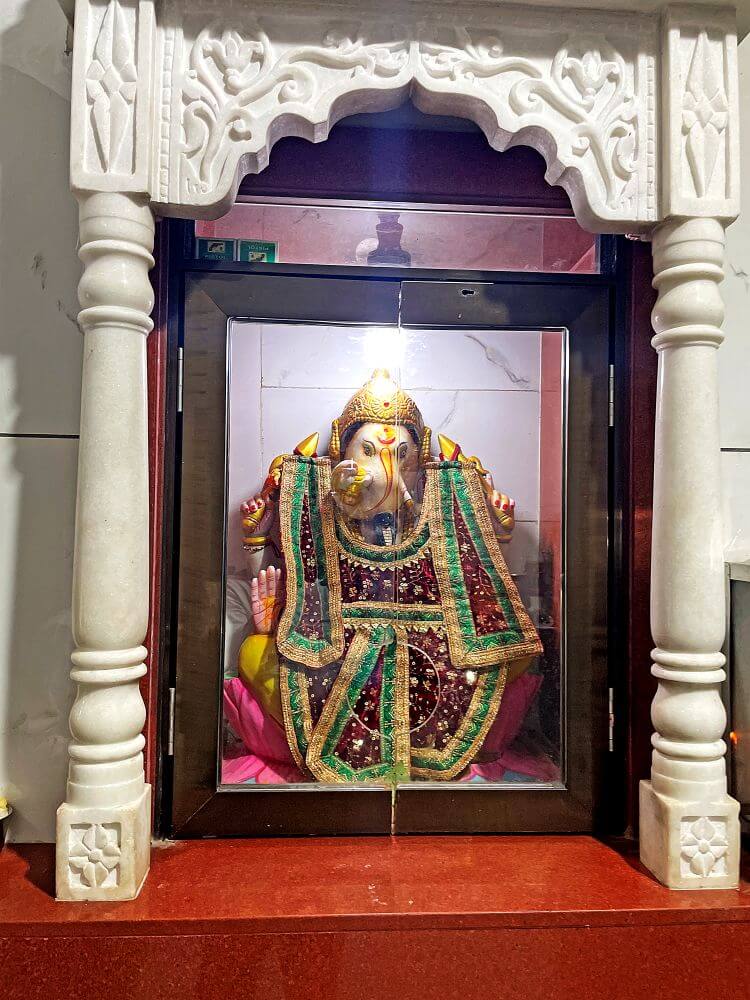 The 33rd chapter of the Tapi Purana mentions Bhimeshwar and narrates how the Pandavas visited this region during their exile. Bhima, the second Pandava and an ardent devotee of Lord Shiva, was skilled in mace fighting. One day, while bathing in the Tapi River, Shiva and Parvati were discussing Bhima’s devotion. While Shiva regarded Bhima as his supreme devotee, Parvati expressed doubt. To test Bhima’s devotion, they devised a plan where Parvati assumed the form of a cow, while Shiva transformed into a tiger intending to attack her.
The 33rd chapter of the Tapi Purana mentions Bhimeshwar and narrates how the Pandavas visited this region during their exile. Bhima, the second Pandava and an ardent devotee of Lord Shiva, was skilled in mace fighting. One day, while bathing in the Tapi River, Shiva and Parvati were discussing Bhima’s devotion. While Shiva regarded Bhima as his supreme devotee, Parvati expressed doubt. To test Bhima’s devotion, they devised a plan where Parvati assumed the form of a cow, while Shiva transformed into a tiger intending to attack her.
As planned, Parvati ran along the riverbank in her bovine form, chased by Shiva as the tiger. True to Shiva’s expectations, Bhima rushed to protect the cow. He pursued the tiger from the riverbank to Dungra, ultimately engaging in combat. Despite the ferocity of the duel, Bhima did not retreat, proving his devotion and selflessness. Pleased with his bravery and protective spirit, Shiva appeared before Bhima and took up residence at the site in the form of a Swayambhu Shivlinga. This sacred site has since been called Bhimanath Mahadev Temple. The Tapi Purana also mentions that Sage Daman lived at this location.
Another legend ties the temple to King Bhimkara, a ruler of this region. Stricken with anxiety over his childlessness, King Bhimkara and his queen worshipped Bhimanath Mahadev. On the Jyeshtha Shukla Ekadashi, they observed a fast, bathed in the Tapi River, and performed rituals at the temple.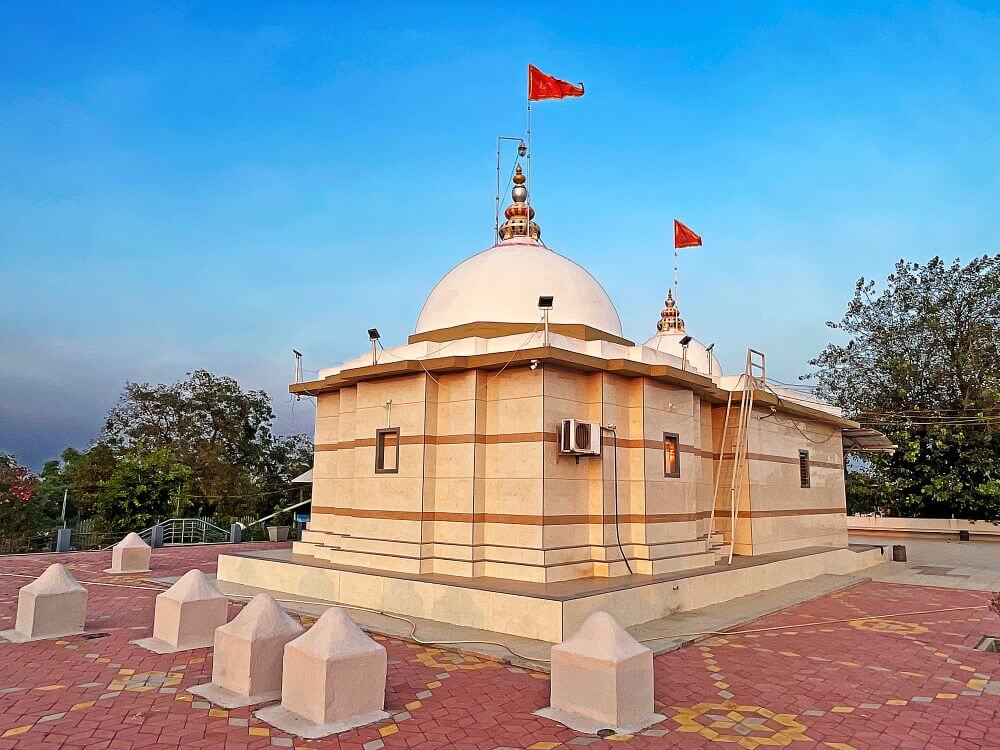 Their prayers were answered with the blessing of a child. Inspired by this legend, childless couples often visit the temple on Bhima Ekadashi to seek similar blessings.
Their prayers were answered with the blessing of a child. Inspired by this legend, childless couples often visit the temple on Bhima Ekadashi to seek similar blessings.
The temple has undergone several restorations over the years, acquiring its present form through recent renovations. Situated at the heart of the village, the temple stands on elevated ground, accessible by a flight of 35 steps. A covered pathway with a sheeted roof provides shade for devotees on their way to the temple.
The structure comprises a Sabhamandapa (assembly hall), an Antarala (antechamber), and the Garbha Griha (sanctum). The flat roof of the Sabhamandapa contrasts with the domed Shikhara (spire) above the Garbha Griha. 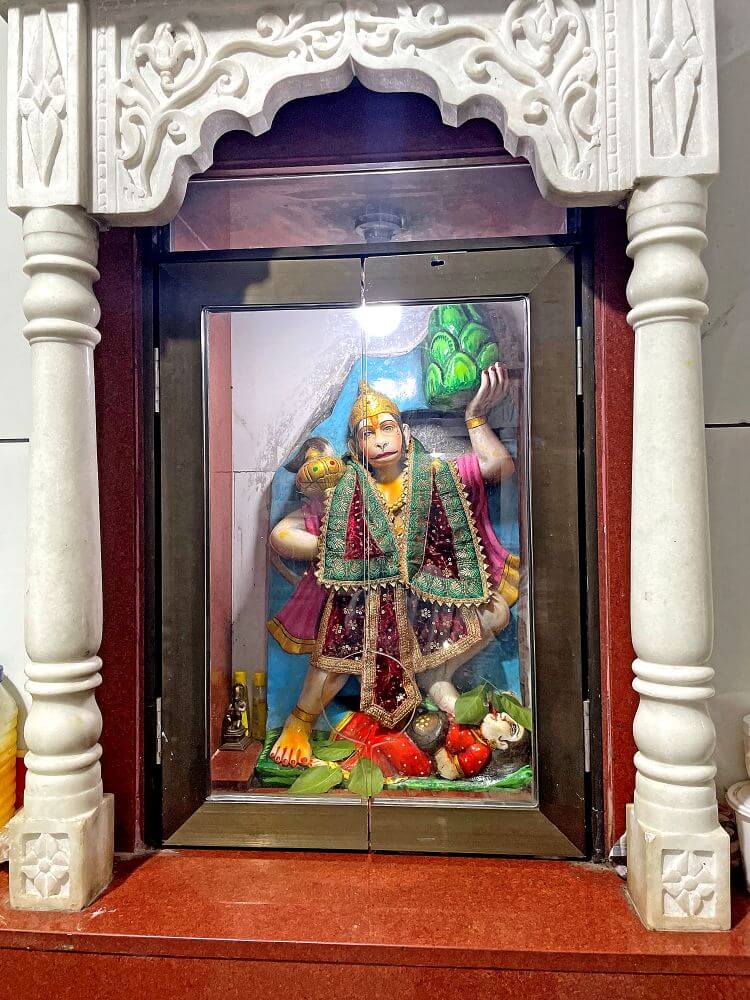 The temple’s walls and flooring are adorned with marble tiles. A smaller shrine dedicated to local deities made of stone is located in front of the temple.
The temple’s walls and flooring are adorned with marble tiles. A smaller shrine dedicated to local deities made of stone is located in front of the temple.
The Bhimanath Mahadev Temple is built on a raised platform (Jagati), and devotees ascend eight steps to reach the Sabhamandapa. Within the Sabhamandapa, a raised pedestal holds a statue of Nandi (Shiva’s bull) and a tortoise. Intricately carved arches connect the columns of the assembly hall. The Antarala features a niche with an idol of Ganesha on the left and Hanuman on the right. The sanctum houses a massive Shivlinga encased in a copper covering. Instead of the usual Shalunka (a base for the lingam), there is a smaller octagonal pedestal. The sanctum also features a coiled serpent deity with a raised hood, protecting the lingam. Above the Shivlinga is a canopy adorned with Rudraksha garlands. A marble idol of Goddess Parvati is installed on the rear wall of the sanctum.
To the left of the temple is an ancient shrine dedicated to Balaji Dev and Sheetla Mata. Behind the temple lies a garden, while the priests’ samadhis (tombs) are located nearby. A short distance from the temple flows the serene Tapi River, enhancing the temple’s spiritual atmosphere.
The temple witnesses regular worship and rituals. Devotees gather in large numbers every Monday, and the monthly Shivratri and annual Mahashivratri festivals see even greater crowds. Bhima Ekadashi, in particular, attracts numerous childless couples who believe that bathing in the Tapi River and worshipping here will grant them children. The temple also hosts a fair during Bhima Ekadashi. During the holy month of Shravan, the temple precincts are abuzz with devotees.
